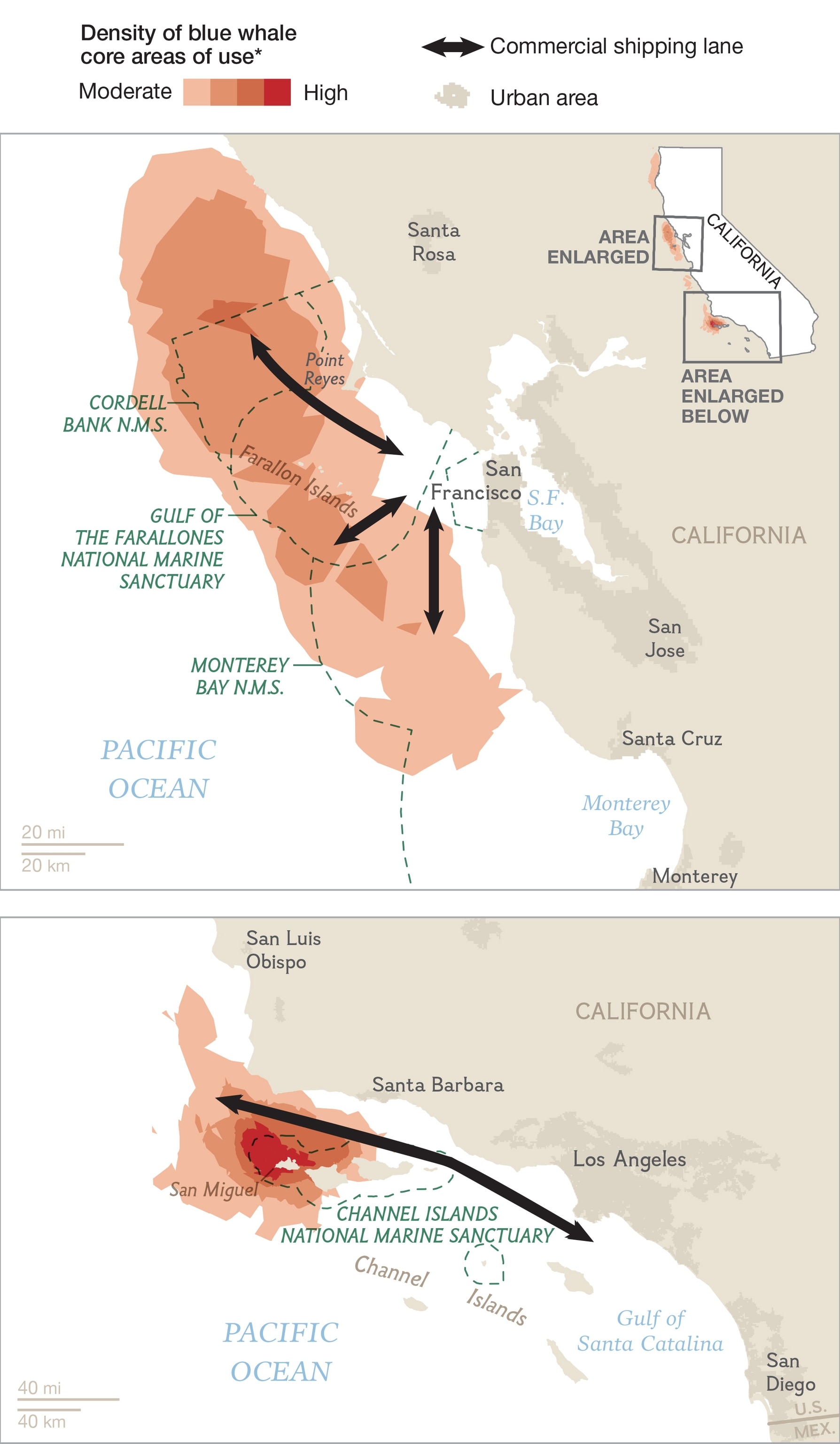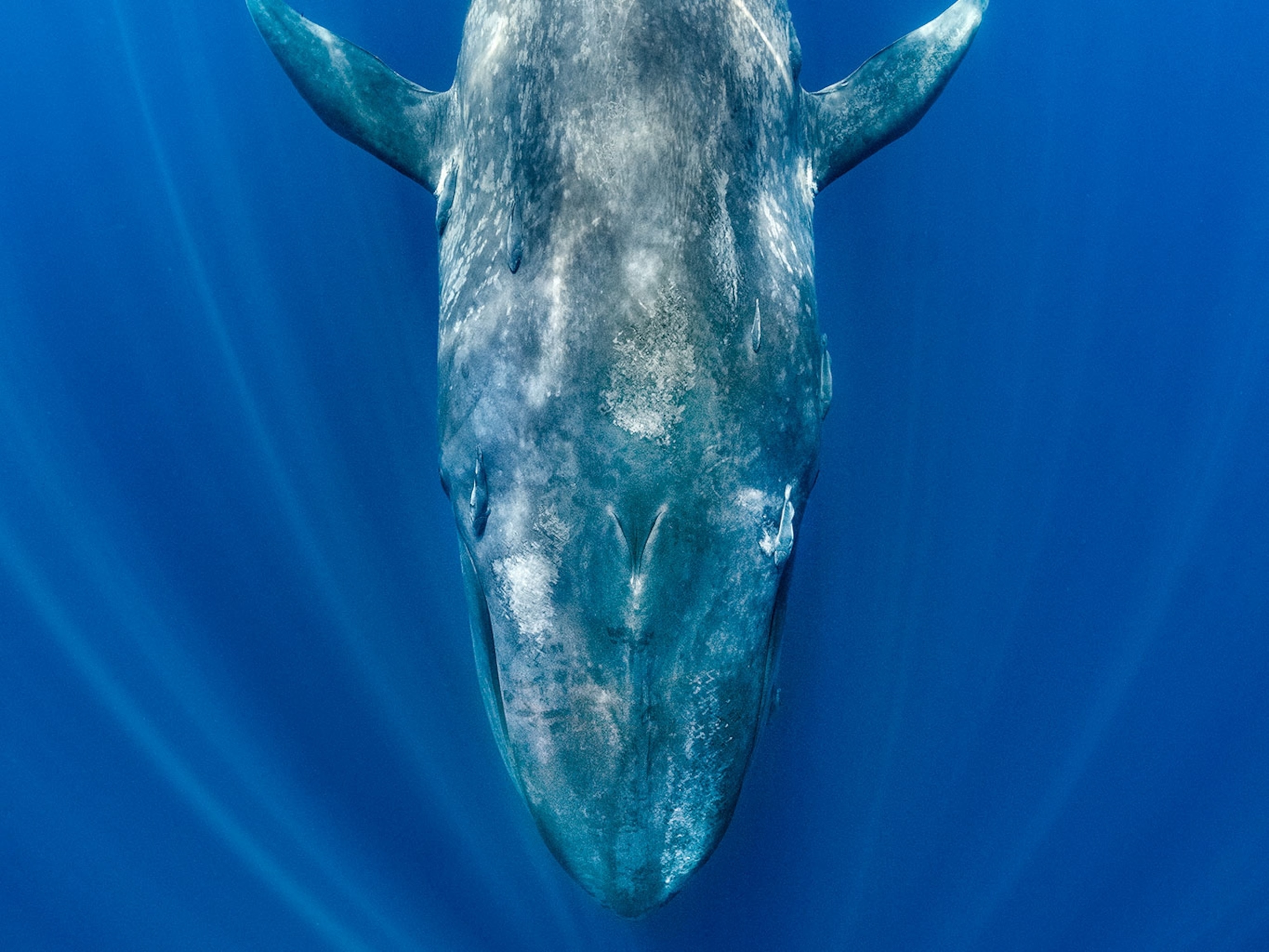
Blue Whale "Hot Spots" Overlap With Shipping Lanes, Raising Threats
Ship strikes may be preventing blue whale populations from bouncing back.
Blue whales, the world's largest animals, frequent waters off California that overlap with some of the United States' busiest shipping lanes, according to a new study that suggests ship strikes are contributing to the whales' stagnating population numbers.
Blue whale numbers have ticked up since 1966, when the International Whaling Commission enacted protections for the endangered species, but their populations haven't rebounded as quickly as expected.
There were about 4,900 blue whales in the North Pacific before commercial whaling fleets around the world set their sights on them in the early 20th century; now there are about 2,500 in the Eastern North Pacific.
The study, published Wednesday in the journal PLOS ONE, found that blue whales frequent "hot spots" that intersect shipping lanes near the Channel Islands off Los Angeles and the Farallon Islands off San Francisco every summer.
Despite rules governing vessel speeds within shipping lanes in those areas, as well as observation systems designed to spot whales in time for a ship to avoid them, whales still get hit.

Ships struck and killed three blue whales in southern California alone in 2007, says study co-author Ladd Irvine, a marine mammal ecologist with Oregon State University in Newport. Two others were found dead in the same area, but the cause of death was inconclusive. This may not seem significant, but in a population of 2,500, five dead blue whales were enough for the National Oceanic and Atmospheric Administration (NOAA) to declare the deaths "unusual mortality events."
Irvine and colleagues hope the new satellite tracking data—funded in part by a National Geographic grant—can help modify existing shipping lanes to minimize run-ins between ships and whales. The study authors note that one of the southern California lanes, which runs between three of the Channel Islands and Santa Barbara, could be moved southward to avoid the whales' highest-use areas.
That would be difficult, says Michelle Berman-Kowalewski, a marine mammal biologist with the Channel Islands Cetacean Research Unit in Santa Barbara, California, who was not involved in the study. The U.S. Navy has testing sites in the area of the proposed new lane, so rerouting ship traffic would be a challenge.
Irvine acknowledges the difficulties, but says that NOAA is trying to bring shipping companies, the U.S. Navy, and other stakeholders together to work out the best routing of shipping lanes for everyone involved.
Anecdotal evidence and observations from ship-based surveys had noted blue whales in California coastal waters before. Irvine and colleagues quantified those observations using 15 years' worth of satellite tagging data. (Read about tracking blue whales in National Geographic magazine.)
Satellite tags are much more comprehensive in gathering location data than ship surveys are, says Berman-Kowalewski, a marine mammal biologist with the Channel Islands Cetacean Research Unit in Santa Barbara, California. The tags record data without regard to weather conditions or time of day as long as their power source operates.
Follow Jane J. Lee on Twitter.





